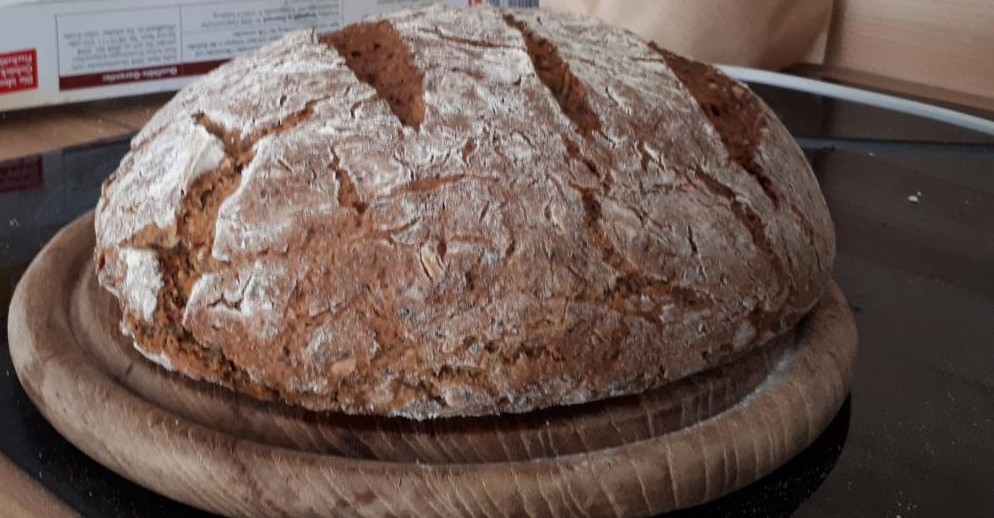I’m trying to incorporate more beans into my diet and am finding it quite difficult to get my beans the way I want them to be. I’m curious to hear your guy’s standard bean recipes. Do you guys use canned or dried beans? Stovetop or microwave? Any secret ingredients?
Here’s what I’d call my standard bean procedure.
-
First, I start with canned beans. Dried beans are a bit firmer it seems, but I don’t feel like dried impacts the flavor enough to be worth the soak time.
-
If I have it, I’ll grate half of an onion into the beans. I don’t like onion crunch.
-
Microplane dried mushroom into it for extra protein and flavor
-
Salt, pepper, granulated garlic, paprika and chili flakes. I don’t really like how garlic powder works with the beans and don’t feel the need for fresh garlic. Fresh ginger is really fire in it though. I add things on top of this usually for more flavor, but this is just my standard bean.
-
Microwave for 3 minutes
I’d do more if it made a difference in flavor, but so far I can’t seem to make anything really make the beans pop. What do y’all do?


Absolutely salt your bean cooking water for the best results.
I have been on a Mexican cooking kick recently so I’ll explain how to make really good black beans.
You can cook beans on a stove, in the microwave, in a pressure cooker, or most beans in a slow cooker with the caveat that a few varieties of dried beans absolutely need to be boiled for a minimum of 10 minutes to denature the toxins. But that aside, it’s basically all the same.
One of the benefits of microwave cooking is that it will require significantly less energy than most other methods and it’s exceedingly unlikely to burn on the bottom.
Now for Mexican black beans that go well in salads, burritos and tacos, or with a side of rice:
Get your black beans and water together, as per usual. I eyeball it but there’s plenty of info about measurements out there.
Salt your water.
Add a couple of onions or just one if you don’t like them that much. You can grate them or just slice them in half and remove the halves when the cooking is done, although that’s a bit wasteful but to each their own.
Add garlic. A couple of smashed cloves or minced or garlic powder/granules. Doesn’t really matter.
Add in a big heap of ground cumin, a bay leaf or two if you have them on hand, a reasonable amount of oregano (South American oregano is better but use what you’ve got), a reasonable amount of paprika (smoked is good but either is fine), and chipotle in adobo (chopped/minced/blended) to taste (or cayenne pepper if you don’t have chipotle in adobo on hand.)
After the water has simmered for about 10 minutes, give it a taste - it should be very flavourful, almost like a soup. If it tastes bland, your beans will be bland. Adjust the flavours as you see fit.
Simmer the beans for at least one hour but two is better. Add extra water if it starts getting dry at any point.
To finish the beans, remove the bay leaves and onion halves if you didn’t dice or grate it. Add extra salt if needed and a decent amount of fat or oil. Use what you’ve got on hand but if you’re cooking for omnivores then lard is the best. A vegan alternative to lard is deodorised coconut oil (NOT extra virgin coconut oil - it should have no distinction coconut-y smell or flavour.) If you’re using the beans as a filling then you can cook the liquid down towards the end of the cooking process and then mash some of them, say about 1/8 to 1/4 of them, and stir this well so it combines with the liquid to make a sort of refried bean thing to hold the whole beans together. Add liquid smoke if you feel like it. If you are using the beans in a salad or similar application, you’ll want to strain the beans before using and you won’t want to mash any.
To elevate this dish, here are some optional extras:
Throw in some tomatoes at any stage in the cooking process. Tinned, fresh, paste, whatever.
Add lime juice
Start your dish by blooming your spices in oil first (yes, this can be done in the microwave) then move on to adding water and beans etc.
Add a tiny pinch of baking soda if you prefer softer beans
Add coriander/cilantro stems (and roots) to the liquid while cooking, removing at the end, if you like the flavour
Get at least a few poblano chiles or green capsicum/bell peppers. The more the merrier. Cook over an open flame (barbeque, gas burner etc.) or under very hot grill until the skin has completely blackened. Put into a covered bowl to steam while it cools. Either brush the blackened skin off under water or leave on then finely chop the flesh as you please, adding this to the beans at any stage (although the earlier the better but it’s flexible - most of the time I’ll start this process once the beans are already simmering.)
lol really burying the lede on the chiles in adobo :p that shit lifts!
Huh, that first link of yours has me re-thinking everything I thought I knew. I may have to experiment more. I’ve definitely had beans not soften properly, and holding off on salting until the end fixes that. But the link you posted seems to suggest that at least soaking in salty water is a good idea. I’ve never tried that, but I think I will. I don’t personally care about beans losing their structural integrity, but it’s interesting that if you soak in salty water, the skins don’t burst as often. Well, at least in this one experiment with cannellini beans.
That’s another question I guess I have. Do different beans react differently to salt? I think more testing is in order in my future. (Oh noes, I’m going to have to eat more beans! However will I cope!)
alternatively, if you’re lazy like me, you could just dump in a few spoonfuls of knorr; it already has everything except the chiles and fat/oil. there are also zero salt versions, but i think this one tastes the best.
it also works great for canned and re-fried beans in smallish quantities and a small amount animal fat; i use butter and i usually go with unsalted if i do canned beans.